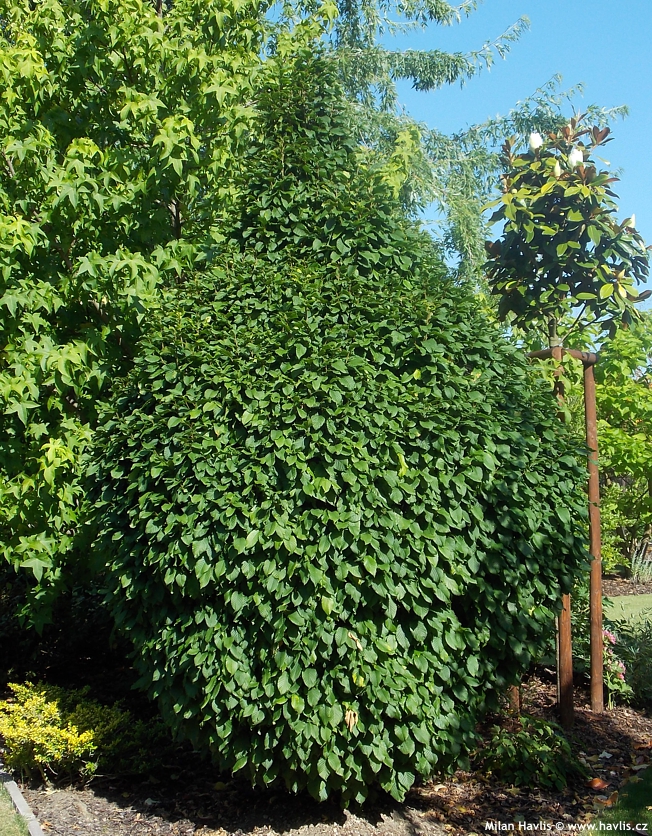Carpinus betulus 'MONUMENTALIS' ('FASTIGIATA MONUMENT') hornbeam
Carpinus
The genus Carpinus – hornbeam – belongs to the birch family and includes around 30 species spread mainly across the temperate zone of the Northern Hemisphere. Fossil evidence shows that hornbeams grew in Europe already in the Tertiary period, with their leaves preserved as imprints in sediments. The first botanical descriptions appeared in the 18th century, when the European hornbeam became part of dendrological studies.
The European hornbeam is native and, in Central Europe, essentially the only cultivated species from the so‑called oak–hornbeam forests – natural woodlands where it grows together with oaks. It occurs naturally throughout Central and Western Europe and extends into Asia Minor. It was first scientifically described by Carl Linnaeus. It is valued for its toughness, its ability to tolerate shade and pruning, and for its dense foliage that provides privacy. In cultural history, hornbeam appears as a tree of hedges and avenues, and as a symbol of endurance – its wood was so hard that it was nicknamed “ironwood.” In folk traditions, hornbeam was associated with protection against evil forces, and its branches were used in celebrations.
The cultivar Monumentalis is a true delicacy among hornbeams. It is an extremely slow‑growing variety with a strictly conical habit, resembling a green obelisk. It grows only a few centimetres per year, reaching around 4–5 metres in height and 1–2 metres in width. The leaves are deciduous, bright green in season and turning yellow in autumn. Even after leaf fall, the tree remains decorative thanks to its regular branching, reminiscent of a bonsai. Compared to the species, it is significantly smaller and more compact, making it an excellent choice for small gardens where one desires a natural‑looking tree but cannot accommodate the size of a standard hornbeam. It looks striking as a lawn specimen, but it also works well in compositions with other slow‑growing woody plants of different shapes, creating a neat ensemble. In modern gardens it can stand at an entrance as a living guardian, while in Japanese‑inspired gardens it complements stone and water features. It does not require pruning but can be shaped freely – ideally at the end of winter.
According to available records, this cultivar was first noted in Europe in the 19th century as a selection of hornbeam with an extremely narrow growth habit. In specialist literature there are suggestions that Monumentalis may be identical or closely related to the clone Columnaris Nana, or to other similar forms that were historically distributed under different names. Some sources even state that Monumentalis may have been merely a trade name for one of these forms. This explains why historical catalogues and collections show a mixture of names such as Columnaris, Columnaris Nana, Globosa or Fastigiata Monument, which often overlap. The exact identity of Monumentalis thus remains partly uncertain, but its characteristic slow growth and compact shape distinguish it from most other hornbeams and make it a sought‑after feature.
Caring for hornbeams is straightforward. These trees thrive in sunny or partially shaded sites and tolerate urban conditions and polluted air well. They grow best in deeper, fertile, well‑drained soils, but can adapt to less ideal conditions provided the soil is not permanently waterlogged. They require even moisture; young plants should be watered regularly, while older ones can withstand short dry periods. Hornbeams respond well to pruning – they can be shaped into hedges, walls or solitary forms, with the best time for shaping being spring or late summer. Fertilisation is not necessary; ordinary garden soil is sufficient. Thanks to their resilience, hornbeams are resistant to wind and frost, commonly tolerating temperatures down to at least –34 °C (USDA zone 4). They are neither poisonous nor allergenic, making them safe and reliable trees for gardens and public plantings. They are not suitable for long‑term container cultivation, as they develop heart‑shaped roots. They tolerate only light salinity and are therefore unsuitable along roads heavily salted in winter. Their roots are not aggressive. Trees with a trunk should be staked for the first three years to protect against wind, and turf or weeds should not be allowed to grow over their roots until they are fully established.
Last update 11-01-2009; 12-11-2025
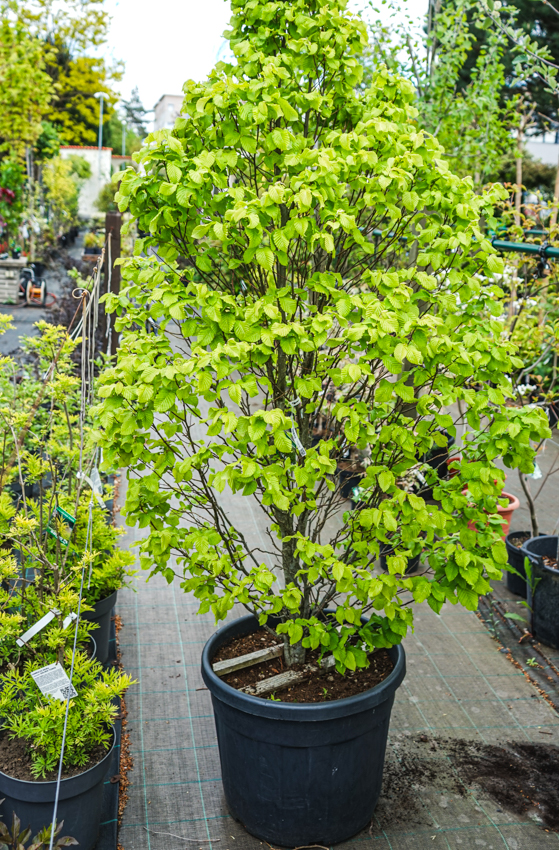
6 376 Kč

6 560 Kč
Goods are shipped all over Europe. For Russia and U.K. and for further details please read about SHIPPING OPTIONS HERE.
Are you interested in a serious discount for orders NOV-FEB? Check your options here.
THE PRICES INCLUDE VAT of 15%. For quick conversion you can use 1 CZK = approx. 0.04 EUR
- STANDARD QUALITY - Plants of this group are 1st class quality with number of branches and overall density adequate to their size and age, considering they were container grown.
- DE LUXE QUALITY - This label guarantees a luxurious quality of manually selected plants that, compared to their height and age, are exceptionally dense and beautiful.
- EXTRA - These plants are usually mature and bigger specimens with exceptional overall appearance.
- STANDARD (as described in the plant form) means a tree with a trunk of 190-210 cm and a crown at the top, unless specified differently. The commercial size for trees is their girth measured in the height of 1m from ground.
- HOBBY - These plants are of the same quality as our standard-quality plants but younger and therefore cheaper.
- SHRUB - a woody plant with branches growing bushy from the ground level.
- HALF-STANDARD or MINI-STANDARD - a small tree with shorter trunk, its size is usually specified.
- FEATHERED - These are trees with branches growing already from the base of the trunk and up along the stem.
- GRASSES and PERENNIALS - Sizes given usually read the diameter of the pot or the clump, as specified.












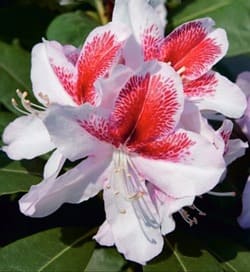




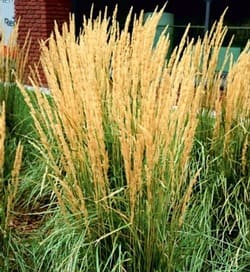
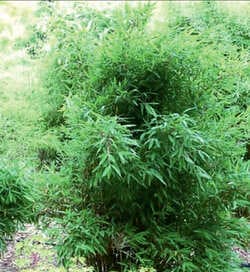
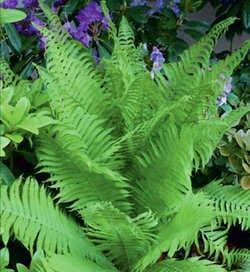




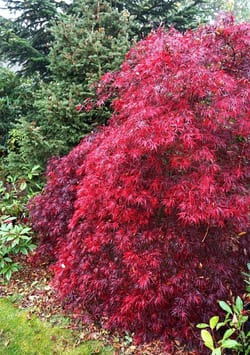
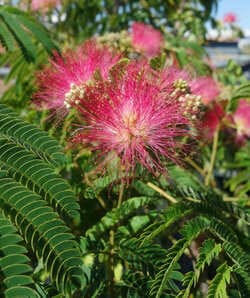
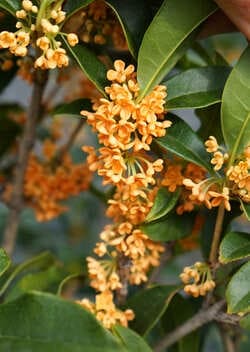



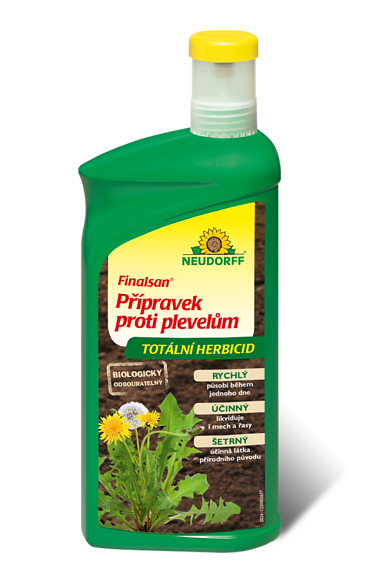


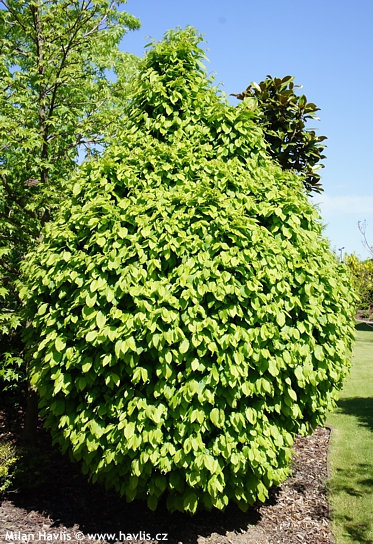
.jpg)


